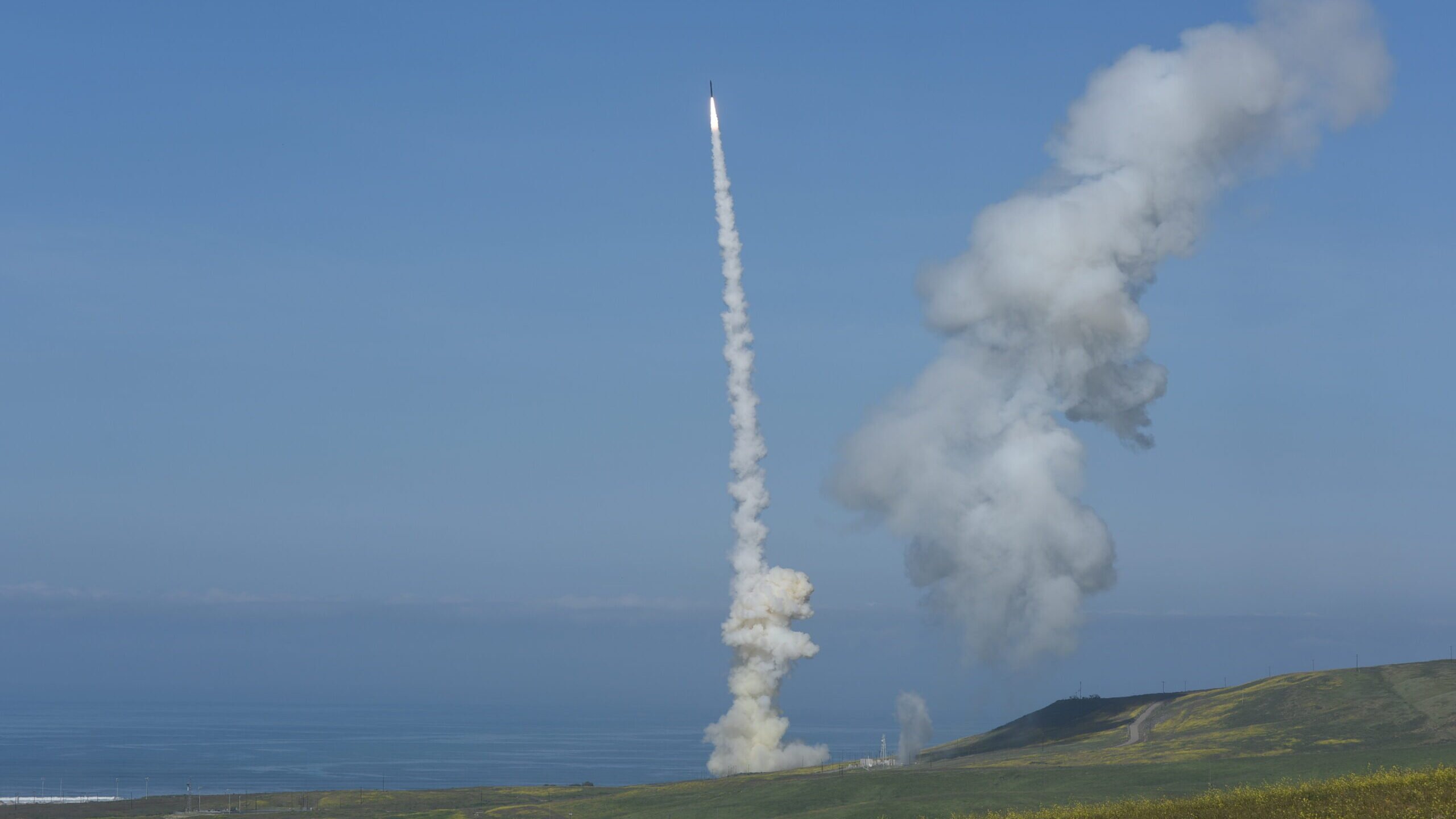
A test of the nation’s Ground-based Midcourse Defense system, was conducted from North Vandenberg on March 25, 2019 by 30th Space Wing officials, the U.S. Missile Defense Agency, and U.S. Northern Command. (Michael Peterson/Missile Defense Agency via DVIDS)
WASHINGTON: The Pentagon’s Missile Defense Agency has awarded Northrop Grumman a contract worth up to $3.3 billion to lead the development of the next iteration of the weapons systems program for Ground-based Midcourse Defense (GMD), designed to take out intermediate- and long-range missiles headed toward the United States.
According to the July 29 announcement, the contract “covers the systems engineering, design, development, integration, testing, and fielding of GWS [Ground-based Midcourse Defense Weapons System] software and hardware meeting warfighter needs, new requirements […] and evolving threats with greater reliability, availability, maintainability and testability than the current system.”
Northrop, which the Pentagon said was the only one to bid on the contract, will carry out its work in Huntsville, Ala.
The GMD program aims to shoot down incoming missiles during the midcourse phase of flight, which begins after the missile’s rocket stops firing. The GMD program is made up of ground support and fire control systems components, in addition to ground-based interceptors.
According to a statement from Northrop, the company plans to use digital transformation processes and DevSecOps software development to update legacy code and integrate MDA’s future interceptor.
“As the GWS prime contractor, we will continue to work closely with MDA to optimize and develop modern missile defense systems to defend against evolving threats and provide advanced capabilities for the warfighter,” Scott Lehr, vice president and general manager of launch and missile defense systems at Northrop Grumman, said in a statement. “GWS is part of Northrop Grumman’s land and sea-based missile defense systems that are enabled by our advanced missile warning and tracking space satellites. Together, we are delivering end-to-end capabilities that will protect the United States and its allies.”
As part of the ongoing service life extension for GMD, the Missile Defense Agency is currently planning to replace the ground-based interceptor with what it calls the Next-Generation Interceptor, another MDA competition and one the July 29 contract mentioned as one of the “new requirements” for the program. For the NGI contest, Northrop Grumman is partnered with Raytheon Technologies, going up against the team of Lockheed Martin and Aerojet Rocketdyne.
The 44 current ground-based interceptors are located at at Fort Greely, Alaska, and Vandenburg Air Force Base, Calif. Last September, the MDA successfully completed a test of new booster for GBI. In Congressional testimony in May, MDA director VADM Jon Hill said that the agency will complete a flight test of the new booster for GBIs in FY23. The new interceptors could be delivered as early as 2028.
The Missile Defense Agency’s fiscal 2023 budget request asked Congress for $2.8 billion for GMD to improve “performance, reliability, availability, and cybersecurity resiliency.”
Iran says it shot down Israel’s attack. Here’s what air defense systems it might have used.
Tehran has been increasingly public about its air defense capabilities, including showing off models of systems at a recent international defense expo.


























